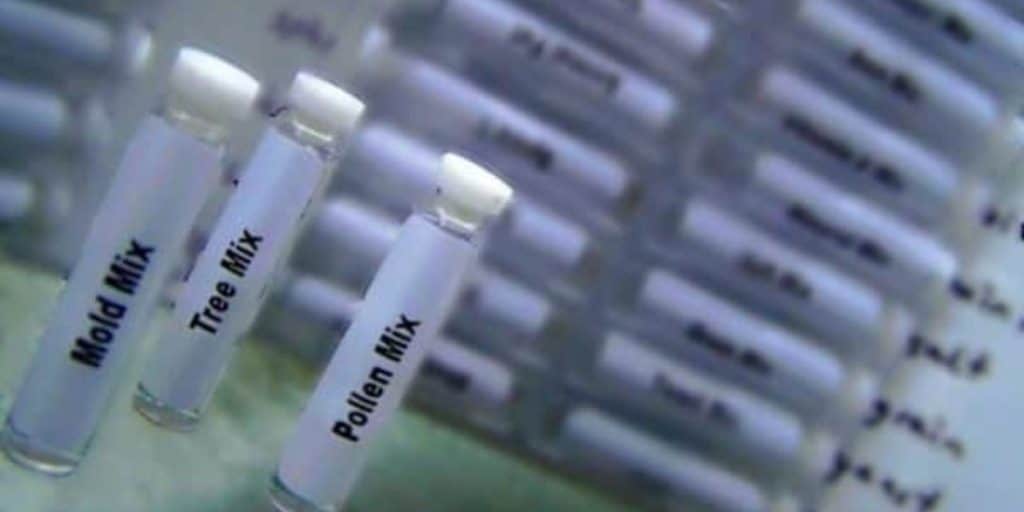Her Eczema was from Environmental Allergies
“Tanya was four months old when she began to have eczema that covered her body. Her skin would crack, bleed, and get infected. We notice it would get worse and that the itching progressed when we were outside. Doctors gave us many creams to try and we got no results from them.
We heard of NAET from a friend and gave it a try. It was really amazing to see her get treated for environmental things such as sunlight, heat, grass, etc. Her skin slowly healed and only a small spot on her thumb bothers her sometimes versus her entire body.”
-Tanya’s parents
NAET Specialist: Robert Prince, M.D
Charlotte, North California, U.S.A
UAE allergy season around the corner
Allergies? Blame it on changing the weather

(Source: Gulf News, Published: September 21, 2013, By Carolina D’Souza, Staff Reporter)
Dubai The weather change could bring with it allergy symptoms including a stuffy, runny nose or stinging eyes, making you reach out for tissue after tissue.
The main airborne allergens (substances that cause allergic reactions) are pollen and dust whereas indoor substances like house dust mites and mold spores are behind allergy attacks year round.
The change in season will bring on a spate of airborne allergies, cautioned allergy specialists, who advised necessary precautions.
Allergies, which can interfere with daily activities and impact the quality of life, are known to reduce productivity and lead to absenteeism at work and at school.
Specialists told Gulf News the most common allergies this time of the year are allergic rhinitis (hay fever), allergic conjunctivitis and allergic asthma.
What do we mean by environmental allergies?

Environmental or inhalant (breathed in) allergies are quite common. Indeed, for half a century they were the only kind to be recognized. Allergens can include such diverse substances as pollens, dust-mite (an almost invisible small animal), feathers, mold, fur, and fabrics. The one thing these substances all have in common is that they are light enough to float in air and so be breathed in. Thus the target area is often the nasal and respiratory passages.
When exposed to allergens, a person who is allergic to that allergen can have varying symptoms. More common symptoms may include sneezing, watery, itchy, red eyes; a runny nose; post-nasal drainage; a scratchy throat or cough.
There are two factors that determine if a person will have allergies: their genetic background, and their exposure to allergens. Allergies run in families. If one parent has allergies, there is roughly a 25 percent chance that their child will develop allergies. If both parents have allergies, the probability increases to 50 percent chance that each child will have allergies.
Anything that enters the body has the potential of producing an allergic response. The most common allergens are pollens, from grasses, trees, and weeds, mold spores, dust mites, cockroaches, insect venom, animal dander, and foods. Tobacco smoke, perfume, hair spray and components of air pollution are typically not allergens, but exposure can aggravate allergy symptoms.
Those who suffer from allergies are more likely to experience chronic sinus infections, chronic cough, ear infections, asthma and bronchitis, eczema, sleep disorders, and migraine headaches.
Symptoms
Allergy symptoms can be categorized as mild, moderate, or severe (anaphylactic).

- Mild reactions include those symptoms that affect a specific area of the body such as a rash, itchy, watery eyes, and some congestion. Mild reactions do not spread to other parts of the body.
- Moderate reactions include symptoms that spread to other parts of the body. These may include itchiness or difficulty breathing.
- A severe reaction, called anaphylaxis, is a rare, life-threatening emergency in which the response to the allergen is intense and affects the whole body.
It may begin with the sudden onset of itching of the eyes or face and progress within minutes to more serious symptoms, including abdominal pain, cramps, vomiting, and diarrhea, as well as varying degrees of swellings that can make breathing and swallowing difficult. Mental confusion or dizziness may also be symptoms since anaphylaxis causes a quick drop in blood pressure.
Diagnosis
- A doctor’s evaluation
- Sometimes blood tests
- Often skin tests and the allergen-specific serum IgE test
Doctors first determine whether a reaction is allergic. They may ask whether the person has close relatives with allergies because a reaction is more likely to be allergic in such cases. Blood tests are sometimes done to detect a type of white blood cell called eosinophils. Eosinophils, although present in everyone are usually produced in greater numbers when an allergic reaction occurs.
Because each allergic reaction is triggered by a specific allergen, the main goal of diagnosis is to identify that allergen. Often, the person and doctor can identify the allergen based on when the allergy started and when and how often the reaction occurs (for example, during certain seasons or after eating certain foods).
Skin tests and the allergen-specific serum IgE test can also help doctors detect specific allergen. However, these tests may not detect all allergies, and they sometimes indicate that people are allergic to an allergen when they are not (called a false-positive result).
Skin testing
Skin tests are the most useful way to identify specific allergens. Usually, a skin prick test is done first. Dilute solutions are made from extracts of pollens (of trees, grasses, weeds, or fungal spores), dust mites, animal dander, insect venom, foods, and some drugs. A drop of each solution is placed on the person’s skin, which is then pricked with a needle.

Doctors may also use other solutions to help them interpret the person’s response to the allergens. A drop of a histamine solution, which should trigger an allergic reaction, is used to determine whether a person’s immune system is working. A drop of diluting solution, which should not trigger an allergic reaction, is used for comparison.
If the person is allergic to one or more of the allergens, the person has a wheal and flare reaction, indicated by the following:
- A pale, slightly elevated swelling—the wheal—appears at the pinprick site within 15 to 20 minutes.
- The resulting wheal is about 1/8 to 2/10 inch (about 0.3 to 0.5 centimeters) larger in diameter than the wheal caused by the diluting solution.
- The wheal is surrounded by a well-defined red area—the flare.
The skin prick test can identify most allergens. If no allergen is identified, a tiny amount of each solution can be injected into the person’s skin (intradermal test). This type of skin test is more likely to detect a reaction to an allergen.
Before skin tests are done, people are asked to stop taking antihistamines and certain antidepressants called tricyclic antidepressants (such asamitriptyline) and monoamine oxidase inhibitors (such as selegiline).
These drugs may suppress a reaction to the tests. Some doctors also do not test people who are taking beta-blockers because if such people have an allergic reaction, the consequences are more likely to be serious. In addition, beta-blockers may interfere with the drugs used to treat serious allergic reactions.
Allergen-specific serum IgE tests
The allergen-specific serum IgE test, a blood test, is used when skin tests cannot be used—for example, when a rash is widespread. This test determines whether IgE in the person’s blood binds to a specific allergen used for the test. If binding occurs, the person has an allergy to that allergen.
Environmental Allergies and how WE can help

We get to the root of the problem, identifying and eliminating the allergen that is causing the recurring symptoms.
We offer the prospect of relief to those who suffer from addiction and allergies by reprogramming the brain to perfect health. Just like rebooting a computer, we can reboot our nervous system to overcome the adverse reactions of the brain and body.
To fully understand what we do, one needs to know some Oriental medical principles. We take the acupuncture and Oriental medical theories and developed a technique that can eliminate the reaction from the root.
Addictions can definitely cause illness. Continuous contact with an allergen produces toxins in the body and causes blockages in the meridians. If these blockages are not cleared, reactions to the allergens often produce symptoms that mimic other diseases.

By clearing all your environmental, heavy metal, and food allergies from the protocol, we strengthen the immune system, improve digestion and absorption. This allows the body to get the necessary nutrients, which are essential for life. without causing any reactions.
One allergen is cleared per visit. Each individual has a different genetic makeup and health history so the number of sessions required varies from one individual to another. For some people, allergens are cleared immediately however, for others it may take many sessions to accomplish the desired results.
Some people might raise their eyebrows and ask, “Can you really eliminate my Environmental allergy?” We answer with a resounding “YES!”
Our evaluation may reveal energy interference in the lung, stomach, spleen, and large intestine meridians. Environmental allergy can be eliminated in most cases when the allergens are identified and desensitized.
We Enjoy Our Christmas Tree!
“My wife’s irritating, impossible Christmas tree allergy was eliminated by NAET 9 years ago. Ever since she is 100 percent free of her Christmas-time Hayfever. We are so grateful to NAET for giving us a freedom to enjoy our Christmas and cherish a fresh tree each year.“
-Stanley Inouye, D.D.S., M.S.D. Sacramento, California
Connect with us through our Facebook page at www.facebook.com/NAETDubai or visit: www.naetdubai.com. You will find a wealth of information here along with an opportunity to speak confidentially through WhatsApp 056-639 0197 or Phone Call 04-420 1633.
You may also email us at admin@naetdubai.com



